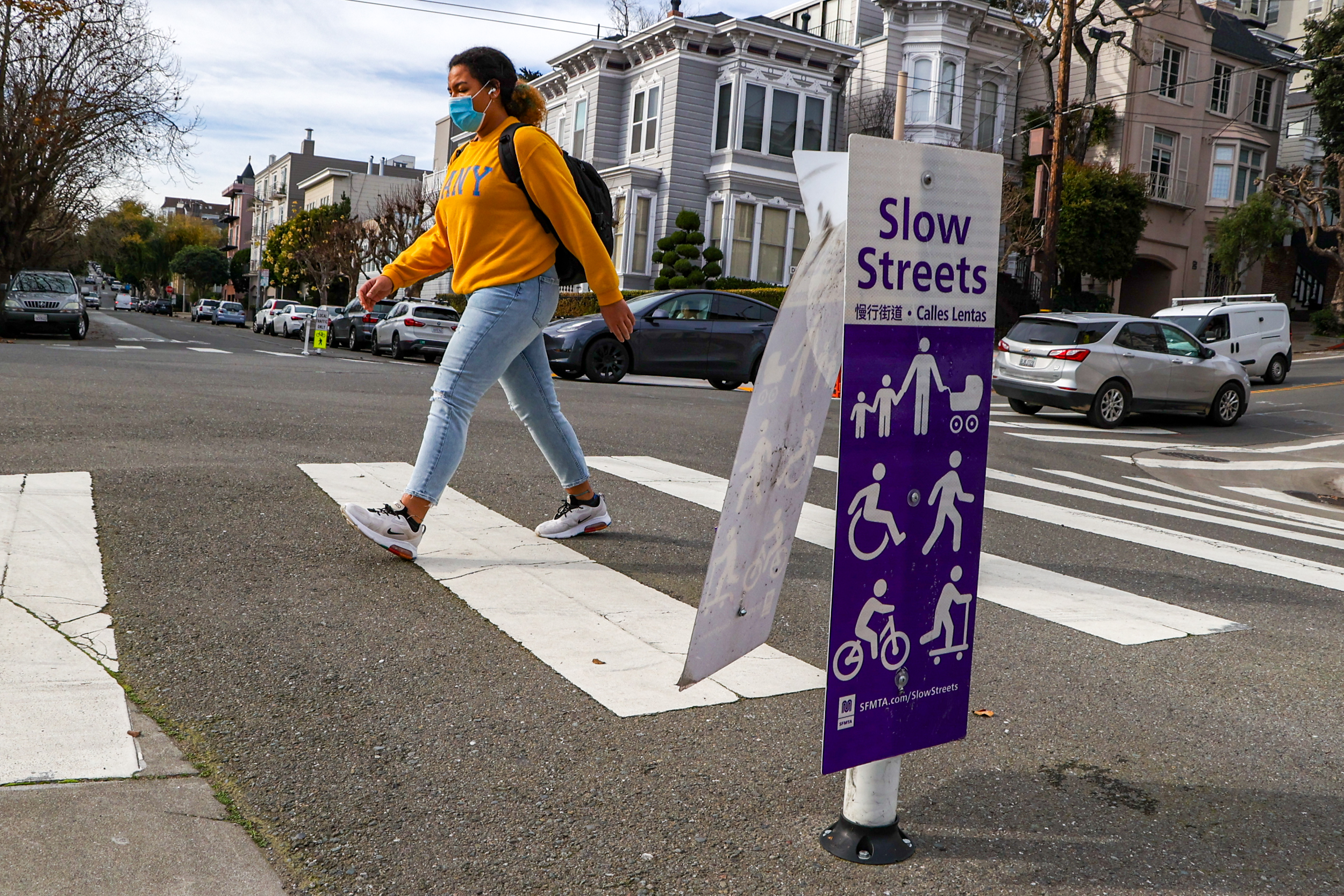San Francisco is poised to make 15 Slow Streets—corridors where commuter traffic is limited to prioritize bicyclists and pedestrians—permanent.
The corridors were deemed the most successful of the Slow Streets introduced during the Covid pandemic, according to the San Francisco Municipal Transportation Agency.
While neighborhood vehicle traffic is permitted on the corridors, the purpose of the program is to establish a network of “low-stress routes” for biking, walking and other forms of transportation. The selected streets are also meant to connect with the city’s existing bike network and improve street-calming measures.
The city launched approximately 30 Slow Streets during the height of the pandemic. The 15 Slow Streets recommended for inclusion in the new Slow Streets Program are:
The Slow Streets program is up for adoption at the Dec. 6 meeting of the SFMTA Board of Directors.
